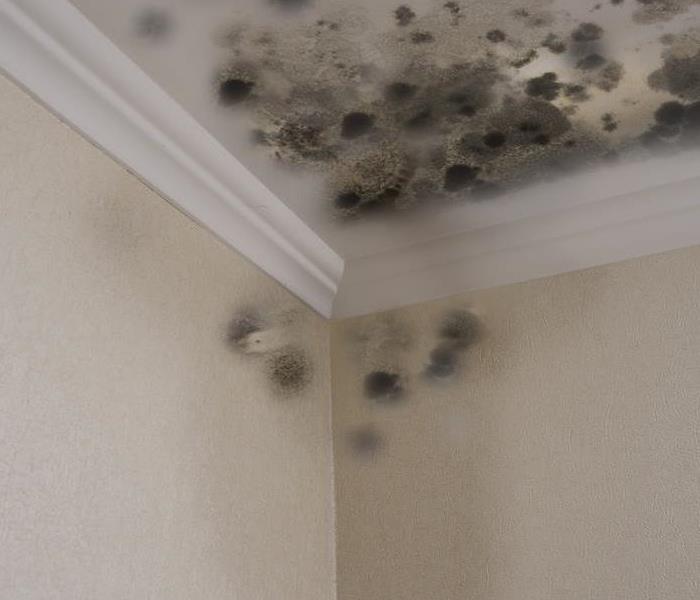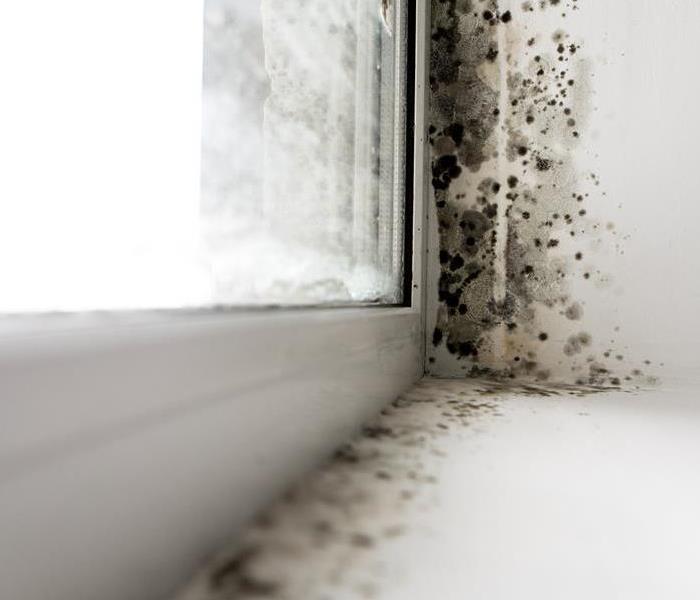Mold Damage Cleanup and Restoration in Lafayette
10/30/2024 (Permalink)
In Lafayette's humid climate, mold damage is a common problem that can quickly spread in homes and businesses after water exposure. Mold not only damages surfaces but also poses potential health risks. SERVPRO of Lafayette offers specialized mold damage cleanup to ensure a safe, mold-free environment.
Our mold remediation process begins with an inspection to locate all affected areas. We then contain the mold to prevent the spread of spores to other areas. Using advanced cleaning and sanitizing equipment, we remove all visible mold and treat the area to prevent regrowth. Our team also ensures that moisture sources are addressed to keep mold from returning.
Attempting to remove mold yourself can often spread spores further. Professional mold cleanup and restoration process provides thorough and lasting results.
For reliable mold damage cleanup in Lafayette. We’re here to help restore your property to a safe condition, protecting both your health and your space.
Contact: (337) 269-6332
Frequently Asked Questions About Mold
10/26/2023 (Permalink)
 Address FAQ about mold to understand the cause of mold and protect your property.
Address FAQ about mold to understand the cause of mold and protect your property.
Mold is a common household issue that can cause various problems if left unchecked. In this blog, we will address frequently asked questions about mold. By providing informative answers, we aim to help you understand mold better and take necessary steps to prevent and address mold-related issues in your home.
What is Mold?
Mold is a type of fungus that can grow in damp environments. It appears as discoloration on surfaces, often green, black, or white in color. Mold reproduces by releasing tiny spores into the air. These spores can settle in various areas of your home and potentially lead to mold growth if conditions are favorable. Mold thrives in moisture-rich environments and can spread rapidly if not properly addressed.
What Causes Mold Growth?
Mold requires moisture to grow and multiply. Common causes of mold growth include water leaks, high humidity levels, condensation, or flooding. Areas with inadequate ventilation, such as bathrooms or basements, are particularly prone to mold growth. Mold can also grow on organic materials like wood or paper if they become damp. Identifying and addressing the source of moisture is crucial in preventing mold growth and spread.
How Can I Prevent Mold?
Preventing mold growth begins with moisture control. Regularly inspect your home for leaks, fix any plumbing issues promptly, and address moisture problems in areas with poor ventilation. Ensure proper airflow and ventilation in bathrooms, kitchens, and other moisture-prone areas. Use dehumidifiers in humid regions or during wet seasons. Keep indoor humidity levels below 60%. Regularly clean and dry affected areas, and promptly remove and replace mold-infested materials.
How Do I Clean and Remove Mold?
Small areas of mold growth can typically be cleaned with a mixture of detergent and water. Gently scrub the affected area, ensuring it is thoroughly dried afterward. More extensive mold infestations might require professional assistance. When cleaning mold, it is essential to wear protective gear such as gloves, goggles, and a respirator. Avoid dry brushing or vacuuming mold, as it can release spores into the air, potentially spreading the problem further.
Can Mold Come Back After Cleaning?
While proper cleaning and removal techniques can eliminate visible mold growth, it's important to note that spores may still be present in the air or on surfaces. These spores can potentially regrow if conditions become favorable again, such as if moisture levels rise. To minimize the chances of mold returning, continue practicing good moisture control, maintain proper ventilation, and promptly address any water leaks or excessive humidity. Regular monitoring and preventive measures can help prevent mold from coming back.
By addressing frequently asked questions about mold we aim to provide valuable information on how to prevent and address mold-related problems in your home. By understanding the causes of mold growth and following proper preventive and cleaning measures, you can maintain a clean and mold-free living environment for you and your family.
Essential Tips for Preventing Mold in Humid Climates: Keep Your Home Mold-Free!
5/17/2023 (Permalink)
 Mold can grow in humid climates and present challenges in your home or business.
Mold can grow in humid climates and present challenges in your home or business.
Living in a humid climate can present challenges, and one of the most common issues homeowners face is mold growth. Mold thrives in damp environments, making humid regions particularly susceptible to this pesky and potentially harmful fungus. However, with the right knowledge and preventive measures, you can effectively prevent mold growth in humid climates and keep your home safe and healthy.
Mold is a type of fungus that can grow indoors and outdoors. It reproduces through spores that are carried through the air and can easily find their way into your home. Once inside, mold can grow on various surfaces, including walls, ceilings, floors, carpets, and even furniture. Mold growth is not only unsightly, but it can also cause health issues such as respiratory problems, allergies, and skin irritation.
So, how can you prevent mold in humid climates? Here are some essential tips to keep your home mold-free:
Control Indoor Humidity
The key to preventing mold in humid climates is to control the indoor humidity levels. Invest in a good quality hygrometer to measure the humidity levels in your home. Ideally, indoor humidity should be kept below 50%. If the humidity levels are high, use dehumidifiers to lower the moisture levels in your home. Make sure to empty and clean the dehumidifier regularly to prevent mold growth within the unit.
Improve Ventilation
Proper ventilation is crucial in preventing mold growth. Make sure your home is well-ventilated by using exhaust fans in bathrooms, kitchens, and laundry rooms. Ensure that your clothes dryer is properly vented to the outside to prevent excess moisture from accumulating indoors. Additionally, open windows and doors to allow fresh air to circulate and reduce humidity levels.
Fix Leaks
Any leaks in your home can quickly lead to mold growth. Regularly check for leaks in pipes, roofs, and windows and promptly fix them to prevent moisture from seeping into your home. If you notice any signs of water damage, such as stains or musty odors, address the issue immediately to prevent mold from taking hold.
Insulate and Seal Your Home
Proper insulation and sealing can prevent moisture from entering your home, helping to keep mold at bay. Insulate your walls, floors, and ceilings, and seal any gaps or cracks in doors, windows, and walls. This will not only help prevent mold growth but also make your home more energy-efficient.
Keep Your Home Clean and Dry
Regular cleaning and maintenance are essential in preventing mold growth. Clean up spills and water leaks immediately, and dry any wet areas promptly. Make sure to clean your home regularly, including carpets, upholstery, and other surfaces, using mold-inhibiting cleaners. Pay special attention to areas that are prone to moisture, such as bathrooms and kitchens.
Avoid Overwatering Indoor Plants
Indoor plants can add beauty to your home, but they can also contribute to mold growth if overwatered. Avoid overwatering your indoor plants and make sure they are well-drained. Use pots with drainage holes and place saucers underneath to catch excess water. Wipe up any spills or standing water promptly.
Use Mold-Resistant Building Materials
When building or renovating your home, consider using mold-resistant building materials. These materials are designed to inhibit mold growth and can be used in areas that are prone to moisture, such as bathrooms and basements. Examples of mold-resistant materials include mold-resistant drywall, paint, and insulation.
Keep Outdoor Areas Well-Maintained
The exterior of your home can also contribute to mold growth indoors. Keep outdoor areas well-maintained by trimming back trees and shrubs away from your home to allow for proper airflow. Clean your gutters regularly to prevent water damage.





 24/7 Emergency Service
24/7 Emergency Service

